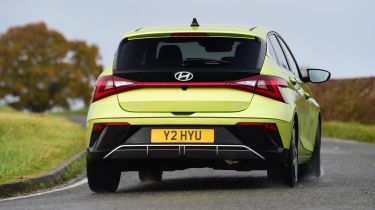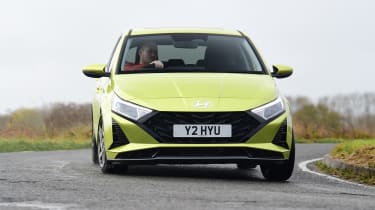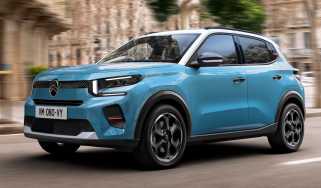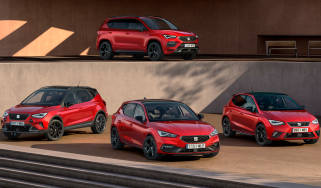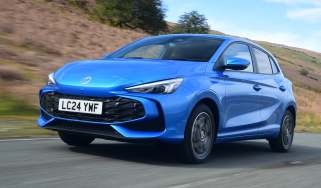Hyundai i20 hatchback - Engines, drive & performance
Buyers never really chose the i20 for its fun handling but the new version should change that
Anyone expecting the i20 to serve up a soft, disconnected driving experience clearly hasn't been behind the wheel of a recent Hyundai. The Korean cars are now some of the best to drive in their respective classes, and the i20 has impressive body control.
This does mean the suspension is reasonably firm but the chassis works well enough to smooth out most road imperfections without losing its cool. In versions with 16-inch alloy wheels, speed bumps are also dealt with in a nicely cushioned manner and it doesn’t get noticeably worse on higher trims with 17-inch wheels. On faster roads, the ride can get a little choppy at times but it's nothing too serious and the engine stays very quiet at motorway speeds to create a peaceful cabin environment.
The steering is quite heavy and a little short of feel but the car responds fairly quickly to turns on the wheel, creating an agile, responsive feel that's just what you want in an urban setting. On the open road, the i20 handles S-bends and quick direction changes very well, with body roll kept neatly in check. This is definitely one of the most enjoyable superminis to drive and sits in the middle of the pack in terms of comfort.
Hyundai i20 petrol engine
The 1.0-litre, three-cylinder turbo petrol engine is a real highlight, spinning smoothly up to 3,500rpm, at which point it's best to change into the next gear thanks to its handy supply of pulling power. The car feels willing from barely above tickover, making it easy and relaxing to drive. Acceleration is fairly nippy: 0-62mph takes 10.4 seconds, although the dual-clutch automatic gearbox increases that by a whole second.
Still, the automatic we drove rarely felt short of power, making light work of steep Cotswold hills. It’s no bad thing that Hyundai only offers this engine on most trim levels, because it’ll be all most buyers will need. We’d sidestep the automatic and choose the manual, though, because the auto can be a little slow to change gears and it’s more expensive.

